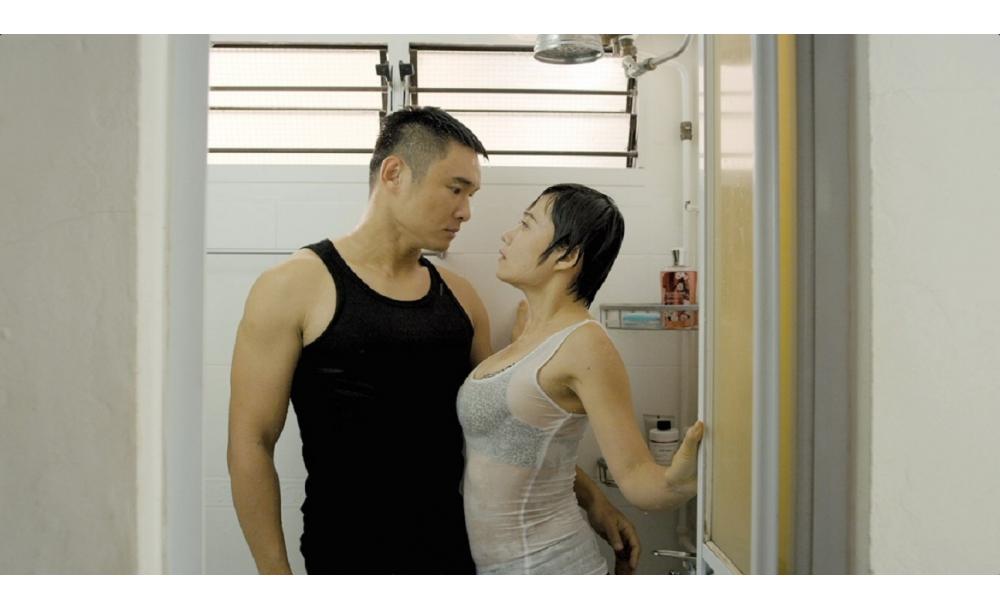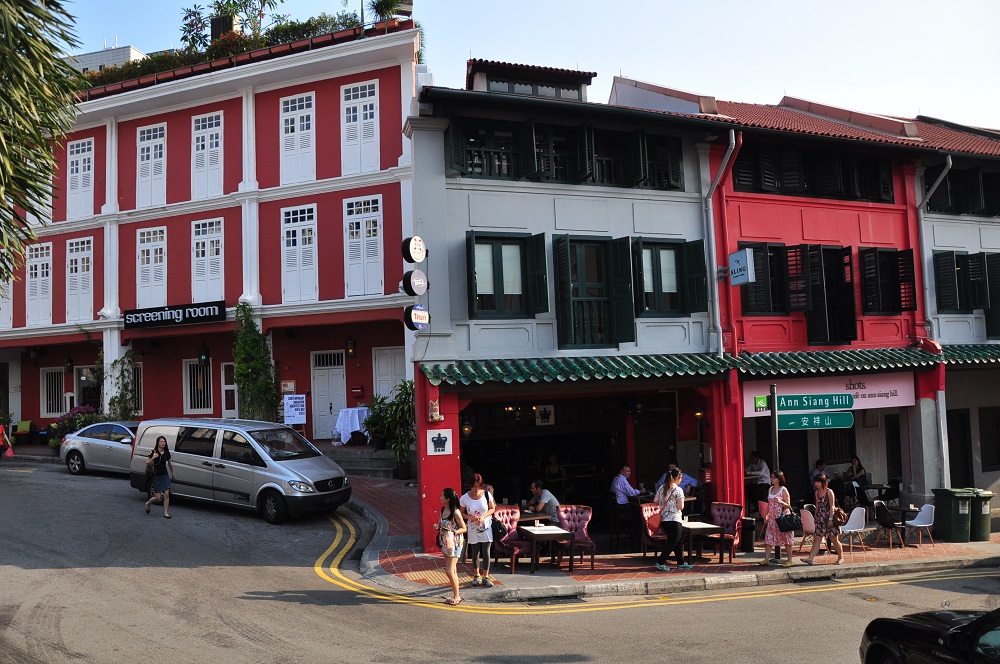Paul Wang is a watercolor artist and adjunct lecturer at Temasek Polytechnic’s School of Design. His work was featured in publications like Moleskine’s Art Journal Series (2011), The Urban Sketching Handbook (2014) and National Geographic Traveller Magazine (2014). Here, he talks about Singapore’s unique urban landscape.
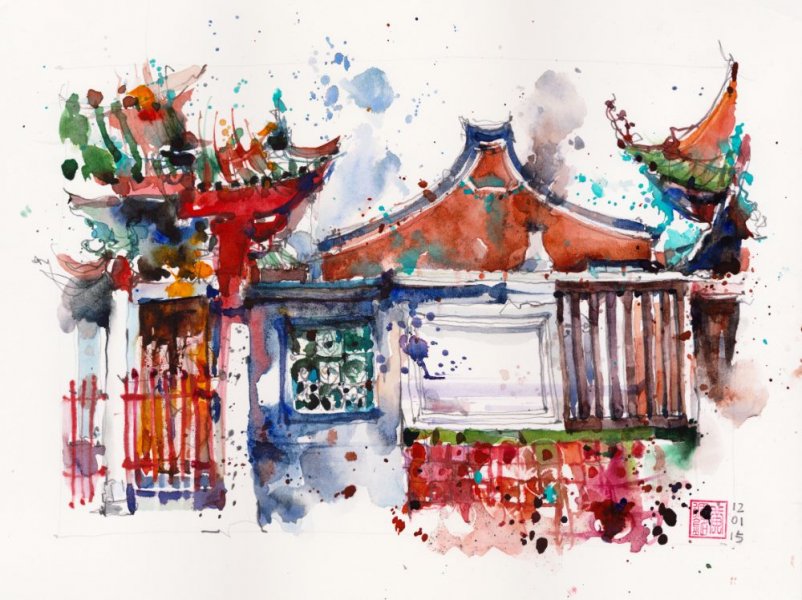 Thian Hock Keng Temple
Thian Hock Keng Temple
What got you into watercolor painting?
I must thank my mother for sending me to weekly drawing lessons when I was in lower primary. I think that opportunity and exposure gave impetus to my current creative pursuits. I have always been fascinated by watercolors because of its transparency and fluidity. It is just a dance between water and [watercolor] paint. I like the challenge of learning a very simple and yet difficult medium, and that led me to use watercolor and markers during my studies at Temasek Polytechnic and the Queensland University of Technology.
Now I belong to the Urban Sketchers group and we are an international on-location sketching movement. Watercolor complements doing quick captures when I am outdoors and is fairly portable without the mess.
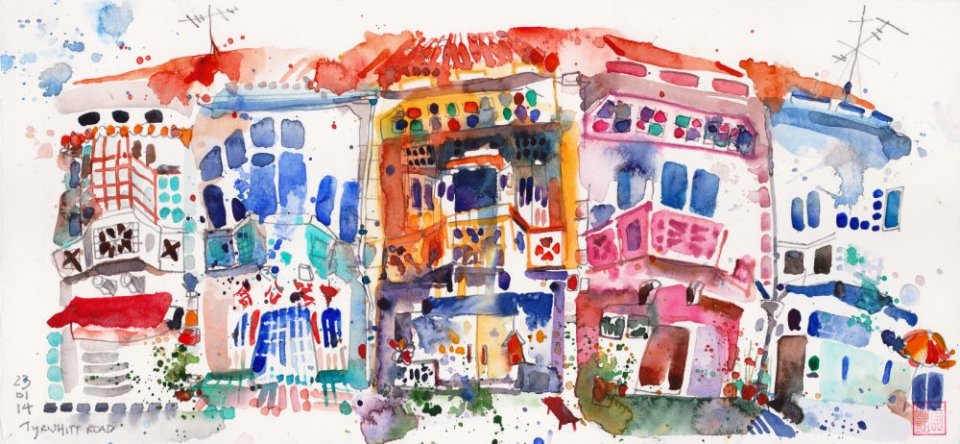 Tyrwhitt Road
Tyrwhitt Road
How is Singapore’s cityscape different from other Asian countries?
To me, Singapore is a melting pot of many very different styles of architecture. I can stand at any corner and see juxtapositions of different building types [that] create very interesting relationships. The old and the new, the religious and commercial spaces [are] compressed into a very exciting scene. That makes our streetscape and skyline distinct and unique. To some it may be confusing and lacking in cohesiveness, but to me, this shows that Singapore doesn’t have just one style of architecture, but a “rojak” mix of styles blended over time.
What do you look out for in Singapore’s cityscape before painting?
As an urbansketcher and an architecture lover, I look out for interesting buildings and spaces and see how I can create a visual narrative through my sketches. I like to use my sketches to tell stories of hidden history and draw out forgotten tales. I love drawing shophouses because they are such an integral part of history and how our forefathers once lived in Singapore. Sometimes I will allow salient features of the environment to inspire my sketching.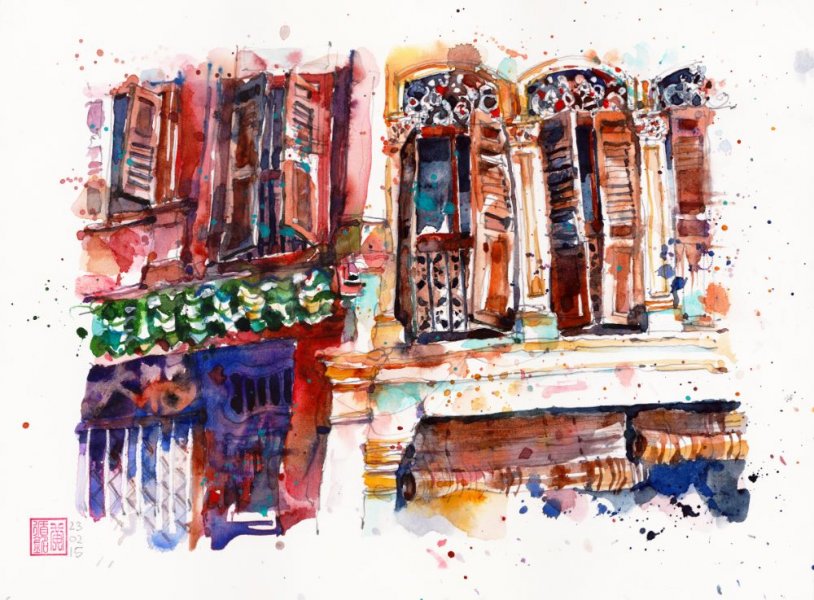
Emerald Hill
How do you go about completing a painting?
I try to sketch and paint on-location to keep my work fresh and spontaneous. I like to use all the sensory inputs from the location to inform and inspire my work. Sometimes the weather does not permit on-location work and I will work from a café. I usually leave my sketches alone because they are not meant to be finished anyway. For drawings and paintings, it usually will last for several days because of the complexity of thinking and execution. I take regular breaks and will step away before it becomes labored. Then I will return a few days later with a clear mind to access the progress.
You have a very unique style of painting, where the lines and the colours look “messy,” but we are able to see the whole picture. Did you come up with this style yourself?
My background training in interior design, architecture and theater design has greatly influenced approach to seeing and drawing. I like to respond quickly to what I see and capture the story behind the scene. I want to blur the line between drawing and painting because my brain is responding to so many sensory stimuli all at the same time. Hence, you will see quick drawings and spontaneous brushstrokes with dramatic colors. I go back and forth between drawing and painting. I like to play and experiment a lot with my different tools and mediums. So sketching and painting to me is like a game I play and my paper is my laboratory.
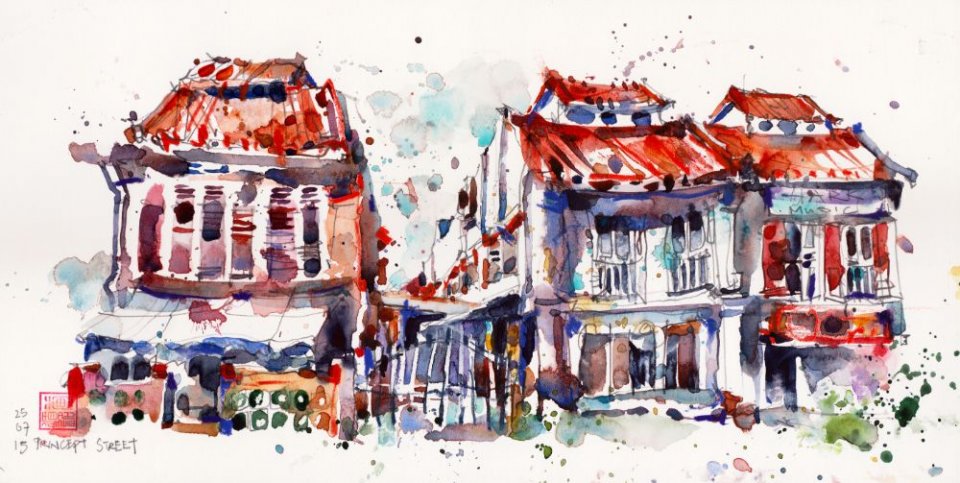 Prinsep Street
Prinsep Street
You are a part of Urban Sketchers Singapore. How have they influenced your work?
Sketching with the Urban Sketchers locally and abroad has helped me see the world with new eyes. There is always another alternative way of seeing the same subject.
We embrace all approaches to sketching as long as it is done on-location. This freedom and support I get has increased my boldness to experiment. I brew new ideas by interacting with fellow sketchers when we sketch together.
 Clementi Central
Clementi Central
Whose work inspires you?
I have two heroes and they inspire me very differently. Shirley Trevena is a very famous English watercolor painter and she is self-taught and well-known for breaking all the rules of watercolor painting. Her book ‘Breaking the rules of Watercolor’ spoke to me and she is a master of texture.
Charles Reid is a famous American oil painter turned watercolorist. He uses very bold colors and knows how to create beauty out of a cacophony of seemingly unrelated colors. I am inspired by the organised mess and blotches he creates on paper. He inspired my very spontaneous way of splashing and painting.
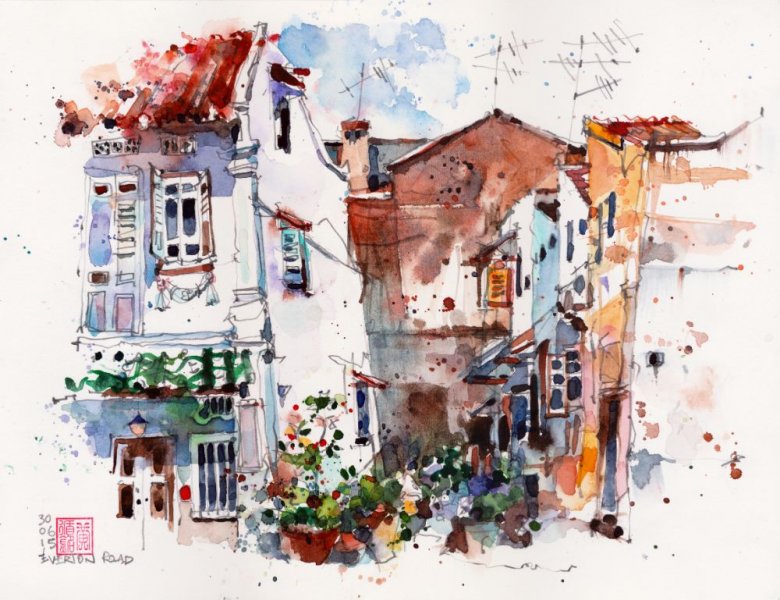 Everton Road Alley
Everton Road Alley
What difficulties did you have when you first started painting?
My earlier sketches and paintings tend to be very rigid and realistic. I think I wanted to record everything I saw and as a result some of my works became very labored. I would also spend too much time finding the best spot and the perfect view before drawing. Nowadays I try to find beauty in the most mundane scene and start drawing.
What other projects are you working on?
On behalf of the Urban Sketchers Singapore, I will be leading a collaboration with the National Museum of Singapore for an exhibition titled Sketches of Da Po – Old and New Chinatown to be held at Bukit Pasoh end of April. The group exhibition seeks to showcase the contemporary environment, activities and unique architectural elements of buildings in and around Bukit Pasoh.
On a personal level, I am currently gathering ideas and materials for an upcoming group exhibition at the Fullerton Hotel which will highlight our love and obsession for food and eating. I have an obsession with drawing food and cafes too.
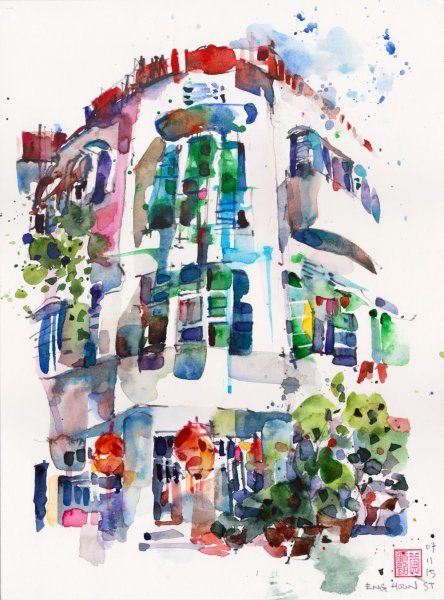
I am also making preparations to teach a drawing workshop at the 7th International Urbansketchers’ Symposium to be held in Manchester UK this summer. This is an annual gathering of about 500 sketchers from different parts of the world. We come together for three days of intense on-location drawing and learning from each other.
You can keep up with Paul Wang’s work on Instagram and Flickr, or visit the Urban Sketchers website for more.




